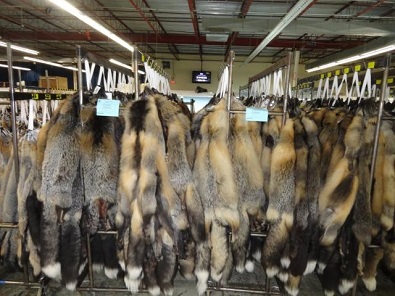The trapping season in the province is off to a slow start, but the Sask. Trappers Association believes the year will yield great furs.
“A lot of guys have been out there. A little bit of concern with the overall markets on the fur,” said Wrangler Hamm, President of the Trappers Association.
“I think that’s got people a little bit slow on getting on their lines. But I think as we move forward into the season, we’ll get that that itch to get back out there and keep doing what we’re doing.”
Hamm said the market is softening to start the year for fur bearing animals in northern Saskatchewan.
“We’ve put a lot of pride we also put a lot of money towards getting out there and putting those efforts into clearing trails, clearing our bush getting our lines prepped. Obviously, the trappers just want to see an honest return for their effort. I feel for them, especially if we see market prices soften just a little bit,” Hamm explained.
Market access is not a concern for trappers, following the closure of North American Fur Auctions a year-ago.
However, COVID-19 draws concerns for live auctions and how trappers access other countries for sales.
“We’ve seen a couple larger fur buyers enter into Saskatchewan and go and purchase fur in a big way. I think the nice thing about it, especially some reassurance to the trappers is that there are options in Saskatchewan to be able to market your fur,” said Hamm.
While the pandemic is affecting the global supply and demand for furs, Hamm is seeing increased demand for wild furs in China, which he believes will provide greater confidence.
The North West Company, which operates the Northern Store will act as a depot for furs.
Doug Anderson, Director of Sales and Operations said the Northern Store will accept a posted list of pelts.
The company has an agreement with Fur Harvesters Auction to act as a receiving and shipping agent. “What the store will do is they’ll do an advanced tariff on the pelts, and then we will move the pelts to the auction. When those pelts are auctioned off, then the trappers receive a cheque directly from the Fur Harvesters Auction,” explained Anderson.
Hamm said he is working with the provincial government on the creation of a shipping subsidy for northern trappers as moving furs through Canada Post can be quite costly.
“I think the biggest thing will be access on the lines. Whether or not they got a cold enough weather before the snow fell to ensure that the grounds are freezing properly. Because a lot of that becomes inaccessible if it’s too soft underneath,” Hamm said.
